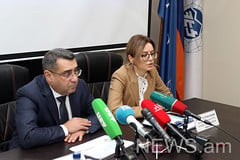In the beginning of this week, the website of Foreign Policy magazine told about the intention of the Trump administration to cut down the foreign aid provided to the developing countries.
Foreign Policy referred to a 15-page document on the Budget of the State Department. The reduction of the aid, which also refers to Armenia and other post-Soviet countries, is planned for fiscal year 2018.
Even critics of the current U.S. aid program such as Richard Sokolsky, a fellow at the Carnegie Endowment for International Peace in Washington, are shocked by this decision, The Christian Science Monitor writes.
In his words, this is the wrong approach, since “nobody is asking the right questions about how resources are related to our objectives.”
The funding of the State Department’s Policy, Planning, and Learning office, which monitors and evaluates aid projects, will be reduced by 44.2 percent, the article says.
The State Department refused to comment on the leaked figures, but The Christian Science Monitor cites the words of a former State Department official, according to whom some people in the Trump administration see foreign aid as a charity giveaway, thinking that the U.S. gets nothing from it and that it is a waste of money.
However, the planned cuts would not make much difference to the nation’s overall budget, since the foreign aid, including military aid, makes up only 1 percent of the total US budget, and the cuts would save about 0.15 percent of overall US government spending.
Apart from this, the authors of the article note that foreign aid has traditionally been seen as one of the three pillars of Washington’s international presence, along with defense and diplomacy.
Back in 2013, Defense Secretary James Mattis, then chief of US Central Command, noted in the Congress that “if you don’t fund the State Department fully, then I need to buy more ammunition.”
According to the leaked figures, the U.S. Government is going to take money away from USAID programs and sometimes replace it – at least partially – with Economic Support Funds (ESF) managed by the State Department. The difference is that while USAID channels most of its money through non-governmental organizations working on development goals such as boosting agricultural output, or improving health and education and governance, ESF goes mainly to recipient governments that do what they like with it.
ESF objectives are driven by [US] strategic considerations, not poverty reduction, which is a convenient way to keep friendly governments onside in important parts of the world, says Scott Morris, an analyst at the Center for Global Development.
Foreign aid advocates are hoping that Congress will not easily give the administration such large amounts of unaccountable money, and that it will restore at least some of the development aid.
















